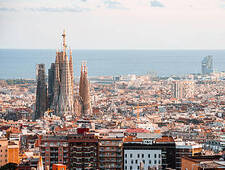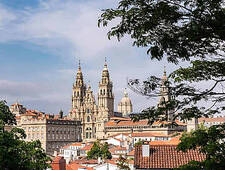The windy coast, or “Costa del Viento” as known to the Spanish locals before their traditional white, fishing villages were discovered by the tourism industry in the 1950s. Prior to the tourism boom that ensued, time sat still in quiet, sleepy southern Spain. The only time that mattered back then was sunrise and sunset, the modern-day equivalence of office hours on the open waters for fisherman of the village. Village life was fishing, and fishing was village life. It was the major source of economic activity and the epicentre of the working day surrounded fishing trips at dawn and dusk.
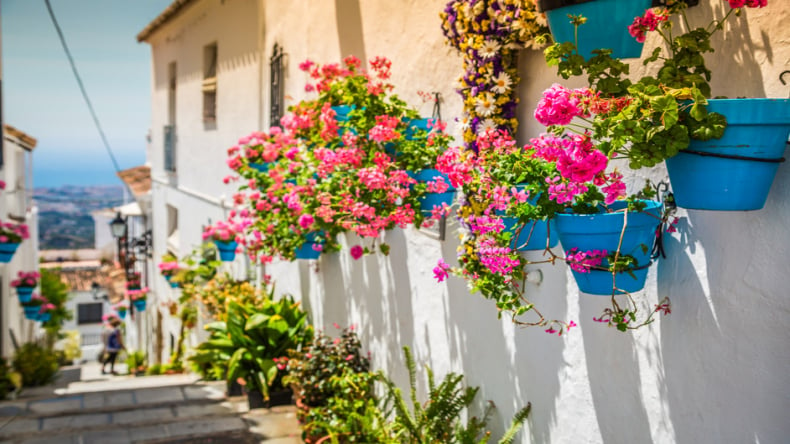 But the tides of change were fast approaching, and old Spain was being launched into the new world. It seems befitting that Costa del Sol was the very starting point where Christopher Columbus set out to explore the new world. Yet ironically, it was now Spain who was welcoming the new explorers to its shores. Prior to the 1950s revolution in travel, the only explorers to Spain were the rich and famous, as travel was a lifestyle privilege reserved for the wealthy. But times where changing, and Spain was now becoming a world where travel was no longer exclusive to the upper-echelons of society. Developments in modern aviation technology meant mass transportation was becoming more economical, reducing travel times and passenger costs. Travel was now becoming mainstream and available to the middle class.
But the tides of change were fast approaching, and old Spain was being launched into the new world. It seems befitting that Costa del Sol was the very starting point where Christopher Columbus set out to explore the new world. Yet ironically, it was now Spain who was welcoming the new explorers to its shores. Prior to the 1950s revolution in travel, the only explorers to Spain were the rich and famous, as travel was a lifestyle privilege reserved for the wealthy. But times where changing, and Spain was now becoming a world where travel was no longer exclusive to the upper-echelons of society. Developments in modern aviation technology meant mass transportation was becoming more economical, reducing travel times and passenger costs. Travel was now becoming mainstream and available to the middle class.

Build It, And They Will Come
Hotel developers saw the opportunity of sun, swim and surf with hundreds of miles of untouched golden sands that stretched along the warm Mediterranean seas. Hotels started to appear in numbers, built as all-inclusive resorts for a new wave of tourism to come. And come they did… in their droves.
Freedom of Money Movement
To capitalise upon the developments in travel and tourism, Spain’s Government eased the movement of foreign currency, a move that welcomed foreigners with their foreign money to spend in Spain.
With the advent of packaged tours attracting new tourists from colder climates such as Northern Europe, visitors were eager to discover the pristine and unspoilt sandy beaches of southern Spain’s Mediterranean coast. Hundreds of kilometres of virgin coastline awaited sun-starved Europeans.
Costa del Sol Rebranded
With the new changes to southern Spain came the greatest of change: rebranding of the name known for years to local residents as the “windy coast”. Rebranded for tourism, Costa del Viento is today known as “Costa del Sol” - the coast of the sun.
Costa del Sol Rebranding Fuels Population Change
The rebranding of the Costa del Sol and subsequent tourism boom increased the population in Malaga by 71.6%. This growth, much higher than the national average occurred from 1960-1991. During such time the national average was just 29%. Population growth centred around tourism and a clear testament being a surge in Malaga’s seaside areas to 158.5% compared to a decrease of 14.5% inland. Hospitality jobs also increased by 418% in Malaga, whereas the national average across Spain was 131%. Clearly tourism was changing the demographic landscape of Malaga and the greater Costa del Sol.
Spain Today
Today Spain is the world's second most visited country (after France) with 82 million tourists per year, accounting for 11 per cent of the national economy. And while Spain is famous for its beaches, visitors come for much more - eager to explore Spain’s rich history and UNESCO world heritage sites. Spain is one of Europe’s richest attractions with over forty-five UNESCO heritage sites, with the most famous: Alhambra - Spain’s most visited tourist attraction.
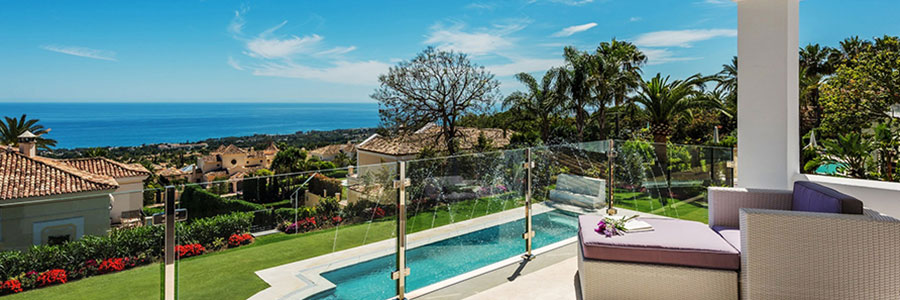
Málaga
The heartbeat of Costa del Sol lies Málaga – the eponymous city of the Málaga province in the Andalucían region. Málaga’s history dates back nearly 3,000 years and is one of the oldest cities in the world. Like its more famous cousin, Barcelona, Málaga is also found on the Mediterranean coast and enjoys one of Europe’s warmest winters. Connected to the world by Spain’s 4th busiest airport, Málaga’s International Airport serves as the gateway of tourism to the Andalucían region.
Marbella
Like most former Costa del Sol villages of yesteryear, Marbella started as a quiet 900 population fishing village. In stark contrast to Spain’s history, Marbella represents the modern-day development of new Spain. Located in the Costa del Sol, southern Spain’s Andalucían region, Marbella is the famous holiday hotspot of the rich and famous, where it’s not uncommon to sight celebrities, royalty and Presidents. Marbella is considered Costa del Sol’s bastion of bling with TV reality stars coining the term: “No Carbs Before Marbs” in an effort to remain bikini-body ready. Standing centre stage in the tourist coastal town is the 'Golden Mile', an extravagant collection of star-studded clubs, upmarket restaurants and glamorous hotels stretching as far as Puerto Banús, the flashiest marina on the coast where supercars complement the backdrop of superyachts.
Benalmádena
Benalmádena is a town in southern Spain’s Andalusia on the Costa del Sol, situated approximately 12 kilometres west of Málaga. The town of Benalmádena is a favourite holidaymakers destination with year-round activity due to the permanent local resident population. Benalmádena’s population rises during the summer holiday season, as do the activities and events scheduled over the long summer days. Local and international visitors ritually descend upon Benalmádena for the holiday season.
Torremolinos
Torremolinos is the popular Mediterranean resort town and favourite vacation destination for holidaymakers on southern Spain's Costa del Sol. Torremolinos has an enviable reputation for beautiful weather and dry summers enjoyed along its famous eight-kilometre sandy beach coastline.
The 1950s saw the introduction of packaged tours to the Costa del Sol with droves of tourists visiting southern Spain for the first-time. Prior to the tourism boom, Torremolinos was a fishing village with a small population of 785. Economic activity at the time was predominately generated from the fishing industry. During the tourism boom, savvy developers were keen to construct hotels and resorts. Torremolinos was the first resort developed, and still one of the most popular resorts today.
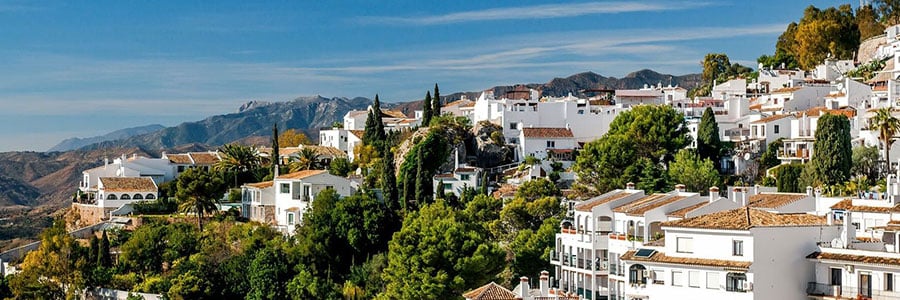
Mijas
Located 30 kilometres from Málaga, Mijas is the quintessential whitewashed Spanish town contrasted by colourful flower pots and flowers in the streets. Nestled in the foothills overlooking the Mediterranean sea, Mijas is a popular town and made famous for its burro-taxis, better known to tourists as donkey taxis. The village consists of three urban centres: Mijas Pueblo, located at the foot of the Sierra 430 meters above sea level, Las Lagunas, the modern part of town along Fuengirola, and La Cala, located on the seafront with more than 12 kilometres of pristine Mediterranean coastline.
Fuengirola
Situated 30-kilometre equidistance from Málaga’s town centre and Marbella, Fuengirola is known as an expatriate hotspot with approximately 25% of permanent residents originating from other countries. Fuengirola has a year-round English speaking expat community, predominately British. Reputed for its several Blue Flag beaches, Fuengirola is a tourist attraction for fun in the sun with European ex-pats. Boasting its own marina, Fuengirola is popular with water sports fans and also features a zoo, Roman ruins, museum, a zoo and a historic castle from the times of the Moors.
Benahavis
The municipality of Benahavis extends over an area of approximately 150 km2 from the coastal area to the mountains between Marbella and Estepona. The village that has retained its classic Andalusian character that lies in the heart of this quiet mountain region.
Benahavis has numerous mountain ranges, river valleys and forests. It can rightfully be called one of the most beautiful places on the Costa del Sol. Very few high-rise buildings allow for uninterrupted views of the surrounding natural landscapes. Properties in Benahavis must conform to low-density building policy which makes it a highly sought after area in Costa del Sol.


